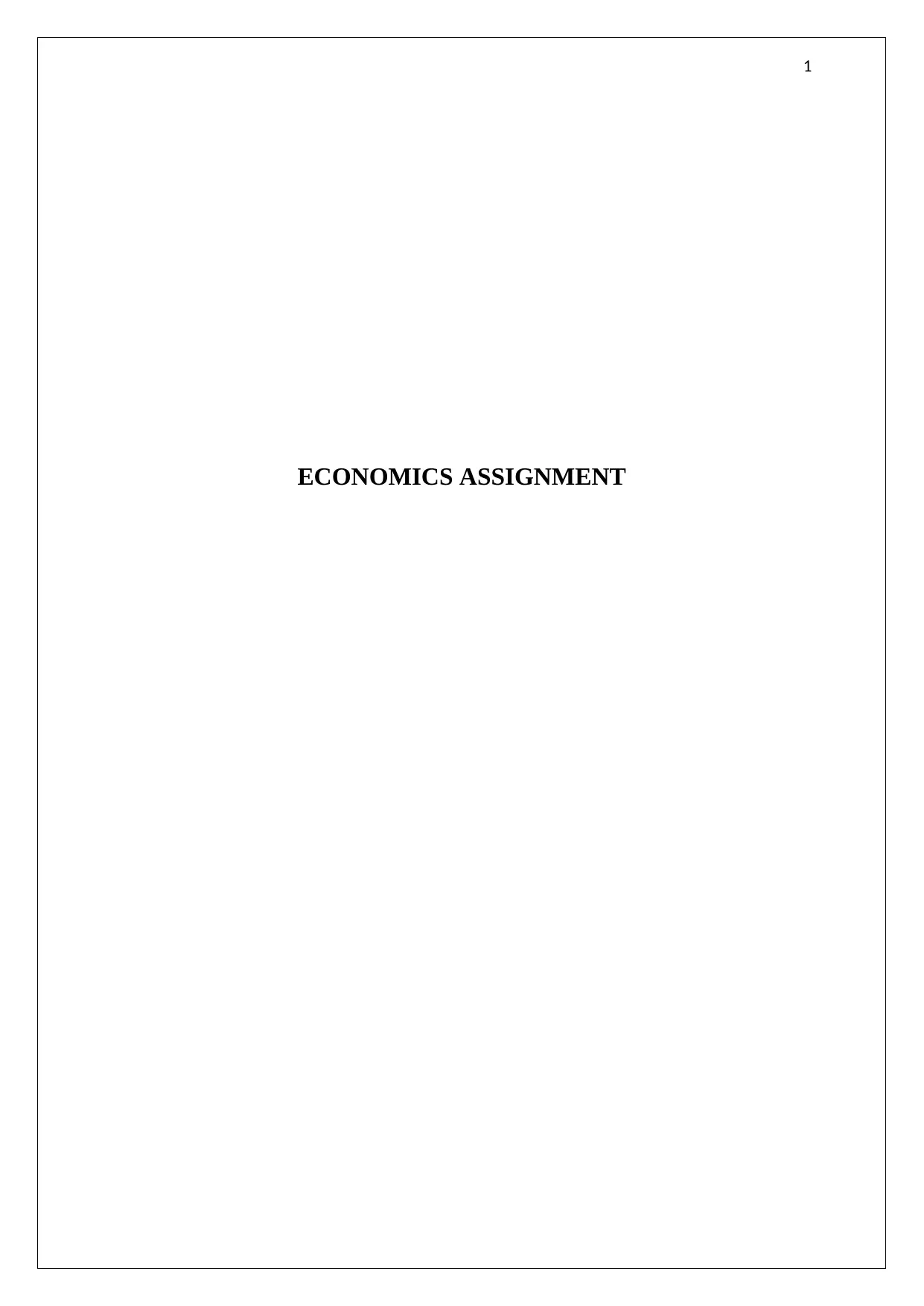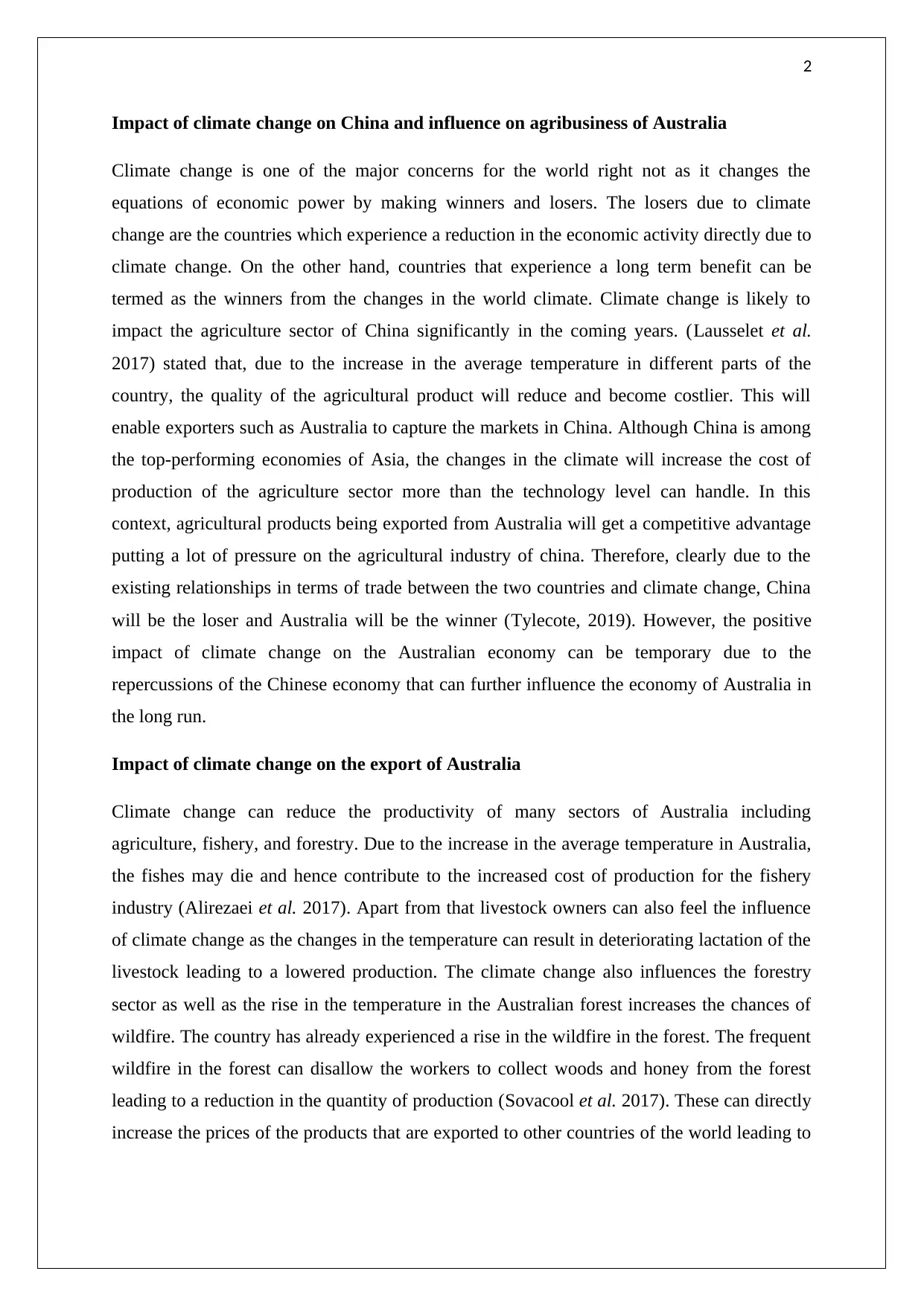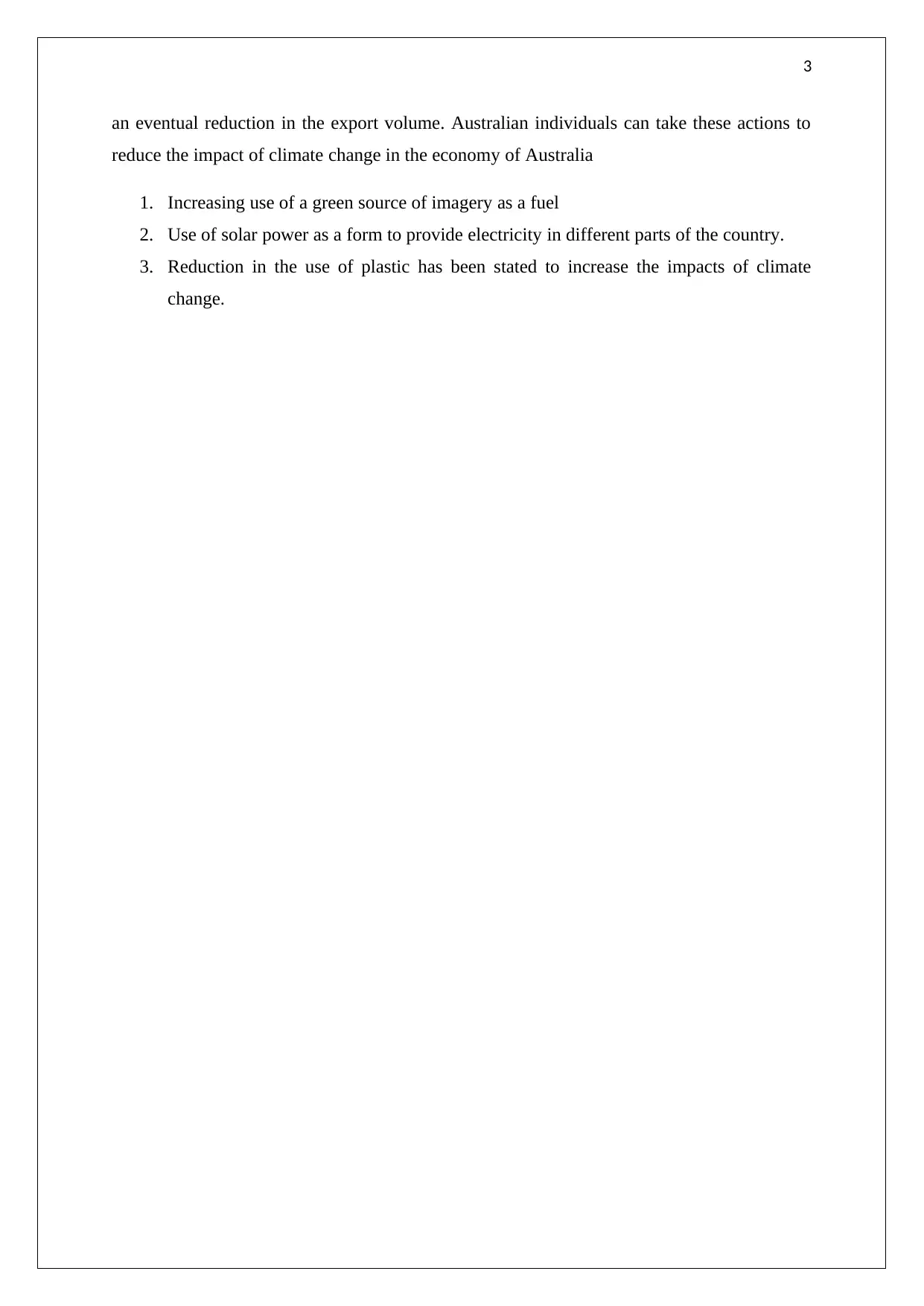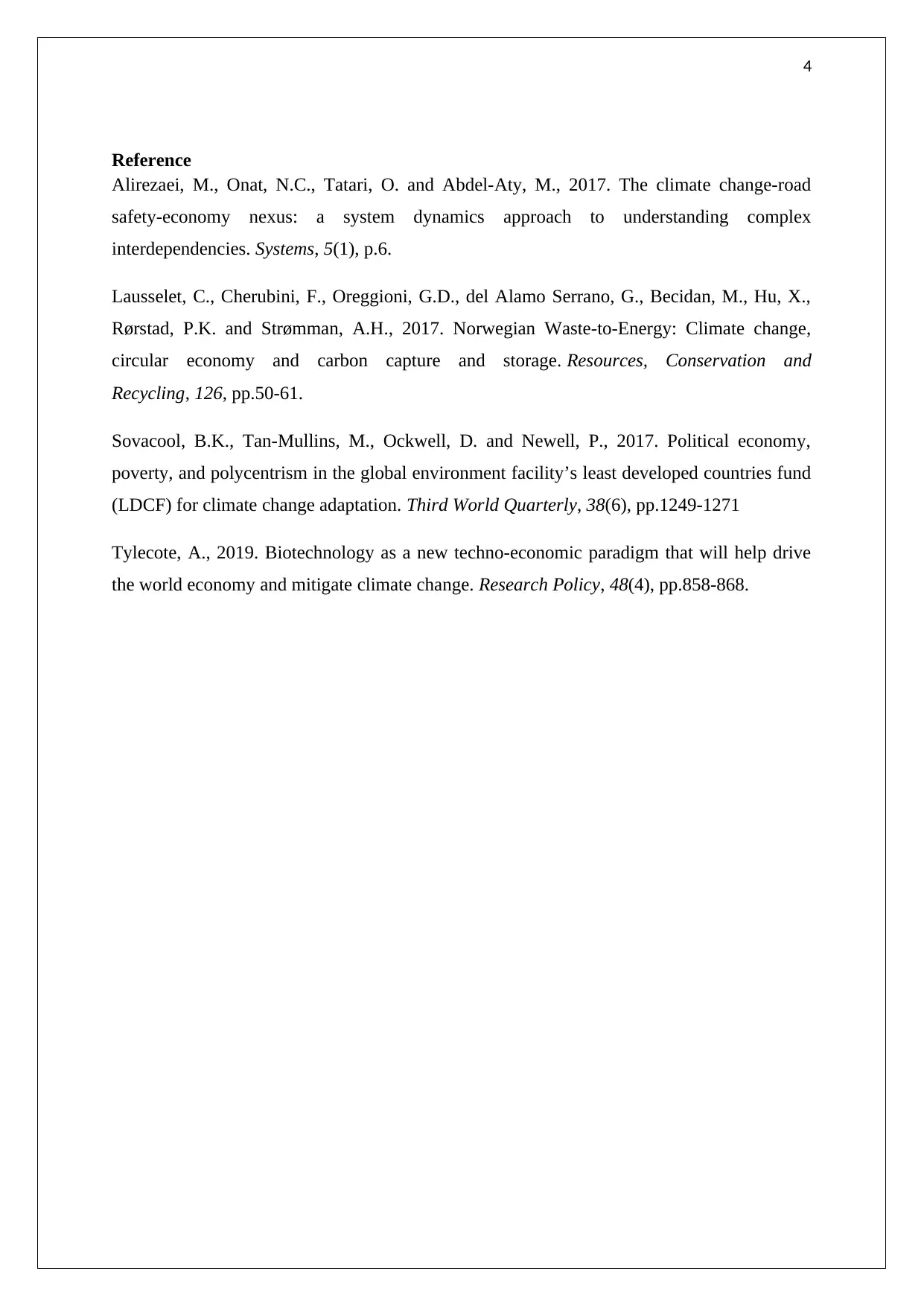University Report: ECON1064 Climate Change Impact on Australia & China
VerifiedAdded on 2022/08/29
|4
|747
|16
Report
AI Summary
This economics report analyzes the impact of climate change on China and Australia, specifically focusing on its effects on the agricultural sector and trade relations. It examines how climate change may reduce the agricultural output of China, potentially benefiting Australian exporters. The report discusses the potential for climate change to reduce productivity in Australia's agriculture, fishery, and forestry sectors. It also offers recommendations for Australia to mitigate the negative impacts of climate change. Furthermore, the report includes an executive summary, literature review, methodology section and conclusion. The report uses input-output analysis and provides an overview of the Australian agriculture, forestry, and fishing industries.
1 out of 4











![[object Object]](/_next/static/media/star-bottom.7253800d.svg)